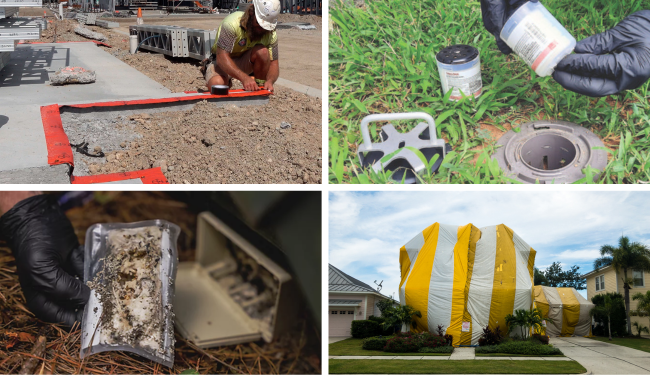Australian Trial Results for Termidor HE: A High-Efficiency Termiticide
Australian Trial Results for Termidor HE: A High-Efficiency Termiticide in a League of Its Own
Since its introduction in 2017, Termidor HE Residual Termiticide has established itself as the industry standard in termite control for Australian pest managers.
The “high efficiency” formulation with patented Advanced Polymer Technology (APT) enhances the transport of the active ingredient through the soil during the product application, ensuring efficiency, discretion and superior treatment. Termidor HE Residual Termiticide offers something truly invaluable, that no other liquid termiticide can: peace of mind and effective risk mitigation.
Tackling termites is an inherently challenging task, so why take chances with an inferior product? Termidor stands out in a league of its own, delivering precisely where and when you need it.
What We Know: The Game-changing Advantage of Termidor HE
Independent laboratory trials carried out by Purdue University in Indiana demonstrated that Termidor HE Residual Termiticide not only moved through soil more effectively than standard termiticides but also spread through termite leads†.
This is a game-changing advantage for professional pest managers particularly where the risk of concealed entry into a structure is elevated.
Results in Australian field trials: Laboratory testing is one thing, seeing this performance in Australian conditions against Australian termites is another...
At our long-term trial facility in Far North Queensland, we established a test to determine performance under Australian conditions and testing the effectiveness of three termiticides, Termidor HE Residual Termiticide and two standard termiticides which claim additional movement within the soil (Fipforce HP and Ultrathor X). The trial was designed to assess soil mobility and subsequent impacts on colony control with six replicate plots established for each termiticide.
Setting up the trial
Mini-house plots were constructed for this trial each with a metal frame, untreated timber, two 30cm x 30cm pavers and topsoil. A flat pad was cleared to enable installation of the metal frame, with the first paver placed directly on the ground inside the metal frame.

Untreated timber was then placed on top of the first paver and the second paver placed on top of the timber. Finally, topsoil was added to the top edge of the frame. This design replicates termites moving over a concealed slab edge, directly into the structure.

Establishing Termite Activity
Plots were inspected bi-monthly for termite activity in the timber (simply lifting top paver). Once termites had established throughout the timber structures, the plots were treated. This design ensured that only the entry through established leads, then through the soil and over the base paver was possible.


Treatment and Inspection
Each of the three termiticides were applied directly to the soil surface (no scarifying or trenching) surrounding the structure as a low-pressure application. As such, control could only be achieved if the termiticides effectively and homogenously moved through the soil and penetrated the established leads.
Plots were inspected every 4 weeks, after the initial termiticides’ application, with the top paver carefully lifted to inspect the timber inside the structure and activity recorded. Assessments were conducted at 4, 8 and 12 weeks post-application.

Only Termidor HE Residual Termiticide proved effective at controlling termites, termite activity within plots treated with standard termiticides continued post treatment.

These images reveal that termite activity in Termidor HE Residual Termiticide plots declined rapidly post treatment, with 100% control of all plots being achieved within 4 weeks post application. This clearly demonstrates that Termidor HE Residual Termiticide was able to penetrate termite leads to control foraging termites. In contrast, no other termiticides tested were able to control termites within the plots.







